The city
[Rio de Janeiro, Brazil]
Rio de Janeiro is divided into four zones:
Centro: the bustling commercial center with just a smattering of residential buildings. At night, it becomes a ghost town, a patchwork of the Rio of yesteryear, decadent and steeped in history, mixed in with modern construction that reflects recent periods of investment and optimism.
The upscale and best-known neighborhoods of Rio all lie within the Zona Sul, or South Zone, the heartbeat of Brazilian tourism. The famous beaches of Copacabana and Ipanema, Sugarloaf Mountain, and Christ the Redeemer are all here. The favelas in this region hold strategic importance for drug trafficking, as they sell directly to those with greater purchasing power.
The Zona Norte, or North Zone, is the most populous region, one that witnessed growth alongside the railroad lines of the past. In the 20th century, it became the city’s first suburb, home to workers who could no longer afford the rising prices of Centro or the South Zone. It lies at the crossroads between the city of Rio and the Fluminense Lowlands, where suburbs were later constructed.
The region of most rapid growth in recent decades, the Zona Oeste, or West Zone, is the most extensive in Rio, covering nearly three-quarters of the city. Part of it, symbolized by the beachfront Barra da Tijuca neighborhood, is replete with gated condominiums for the elite nouveau riche, while more distant neighborhoods are the farthest removed from the influence of Centro and the South Zone. In short, a world apart.
The factions
January 2017
Our story begins in January 2017. Every favela on this map – divided between the competing factions Comando Vermelho, or CV; Terceiro Comando Puro, or TCP; Amigos dos Amigos, or ADA; and paramilitary militias – will take over another area or be taken over by December 2018, among them some of the largest, most important, and most lucrative areas in the city.
If drug trafficking were a legal enterprise, these factions would be peers to Brazil’s premiere multinational corporations. According to estimates by the Civil Police, the ADA raked in more than $26 million per year in the Rocinha favela alone. The trafficker Nem controlled the entire neighborhood of approximately 100,000 residents. Most of the cashflow went toward paying the “arrego” — the monthly kickback for corrupt police, who kept the faction well-informed and helped maintain a blissful peace in the area.
The ADA controlled 17 other favelas in Rio and was a juggernaut of drug sales, overshadowed only by the legendary Comando Vermelho, or Red Command.*
* Sourcing for this piece can be found in the footnotes at the end of the article.
The Comando Vermelho dominated the Centro, as well as the North and South Zones. It emerged as the first cartel in Rio de Janeiro under the name the Falange Vermelha in 1979 during the dictatorship, through the interaction of political prisoners and common criminals in the Cândido Mendes prison on Ilha Grande, an island off the southern coast of the state of Rio de Janeiro.
CV reigned alone until the Terceiro Comando, or Third Command, appeared on the scene in the first half of the 1990s. This faction would pass through a number of changes before becoming the Terceiro Comando Puro, Pure Third Command, as it is known today. At the beginning of 2017, they held a strong presence in the West Zone and in favelas near the lowlands in the North Zone.
In the meantime, militias established control over seven favelas. Composed of firefighters, police officers, and both active and reserve military, they rid favelas of drug traffickers — but make their own profits as monopoly providers of “security,” electricity, water, gas, and internet. Nowadays, militias also sell drugs.
Amigos dos Amigos rivaled the TCP for the title of the second-most important cartel in Rio. They emerged shortly after Ernaldo Pinto de Medeiros, aka Uê, was expelled from the Comando Vermelho for plotting the assassination of the most respected drug lord of the time, Orlando Jogador. In 1996, imprisoned in Bangu and outcast as a traitor, Uê founded the ADA alongside two important druglords: Paulo César Silva Santos, aka Linho, with his “businessman” style and direct connections to suppliers in Paraguay and Bolivia, and Celso Luís Rodrigues, aka Celsinho, who served as a negotiator, making use of contacts in the highest echelons of the Military Police.

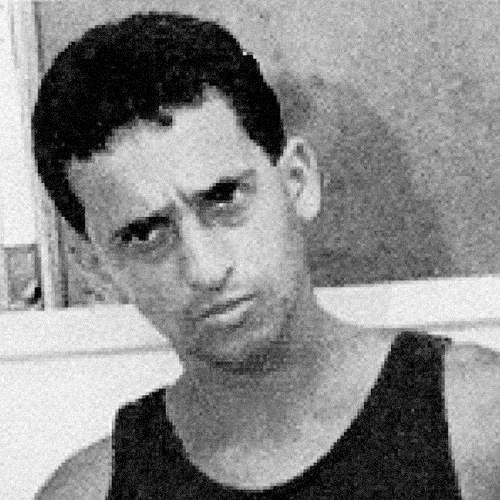
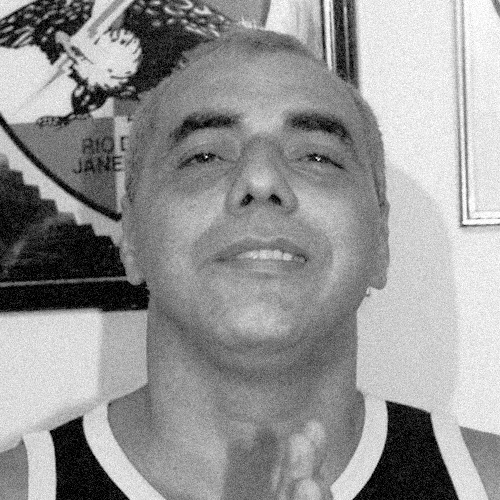
Uê did not live to see the ADA spread from Vila Vintém to other parts of the city. He was burned alive during an uprising in 2002. Neither did Linho, who disappeared in the mid-2000s; police never confirmed the rumor that he was killed by his own lawyer in São Paulo. A hand forming the shape of the letter L, for Linho, became the symbol of the cartel.
The only founder still alive (or whose whereabouts are known) is Celsinho da Vila Vintém, who, during the same riot in which Uê was killed, was spared by his rival, Fernandinho Beira-Mar, then-leader of the Comando Vermelho. “I’m only here today because he left me alone. I didn’t even receive a slap on the face,” Celsinho stated during a trial in 2015. The reason for this act of mercy remains a mystery.
Times of plenty
January 2017
[FAVELA CAROBINHA, West Zone]
When the day broke, it was already scorching in the favela called Carobinha, in Campo Grande, the heart of Rio de Janeiro’s West Zone. Residents were enjoying a Sunday of live pagode music when gunmen flooded the main road. Shots were fired. Three people were killed and another 13 wounded. The area bears strategic importance: The Guandu do Sena Road, which cuts through the favela, provides access to the Vila Kenedy favela complex, the Bangu penitentiary, and the 14th Military Police Battalion headquarters.
The armed men were soldiers of the Amigos dos Amigos cartel, and their aim was to take over the territory of a militia leader named Naldo. They had the support of Carlinhos Três Pontes, who was known for uniting drug trafficking with militias. Naldo and Carlinhos had a misunderstanding. It was said that Naldo didn’t like getting mixed up with trafficking — he was “old-school militia.” Naldo’s territory was reportedly seen as easy pickings because it did not have the protection of the largest militia group in the state, the Liga da Justiça, or the Justice League. The ADA quickly stormed through Carobinha street by street, and Naldo’s paramilitary men, taken by surprise, had no choice but to flee. The favela was captured.
Taking Carobinha away from the militia was more than just a victory: It demonstrated the strength of the cartel and its entrepreneurial leaders, whose growing territories stretched even beyond the city where it began.
The Peak
[Rocinha, South Zone]
Celsinho da Vila Vintém was at the top of the hierarchy, and even prison walls were no obstacle as he called the shots on the streets of his drug-trafficking empire. The first decade of the 2000s marked the apex of the Amigos dos Amigos and, until 2017, the barometer for its success was Rocinha. If all was well in “Roça,” nothing could topple the cartel. Playboy clients in the South Zone had plenty to spend, and profits and marketing were a cinch.
Tucked in between São Conrado and Leblon, two of the richest neighborhoods in the city, Rocinha is home to more than 100,000 residents. The fortunes flowing through the sprawling hillside community had a kingpin: Nem. Rich, popular, and a bit less flashy than his peers, he became a household name during his rein from October 2005 to November 2011. With a new police initiative slated for Rocinha, Nem recognized that his days were numbered and unsuccessfully tried to flee the favela hidden in the trunk of a car. His arrest was a spectacle that viewers nationwide followed live on TV.
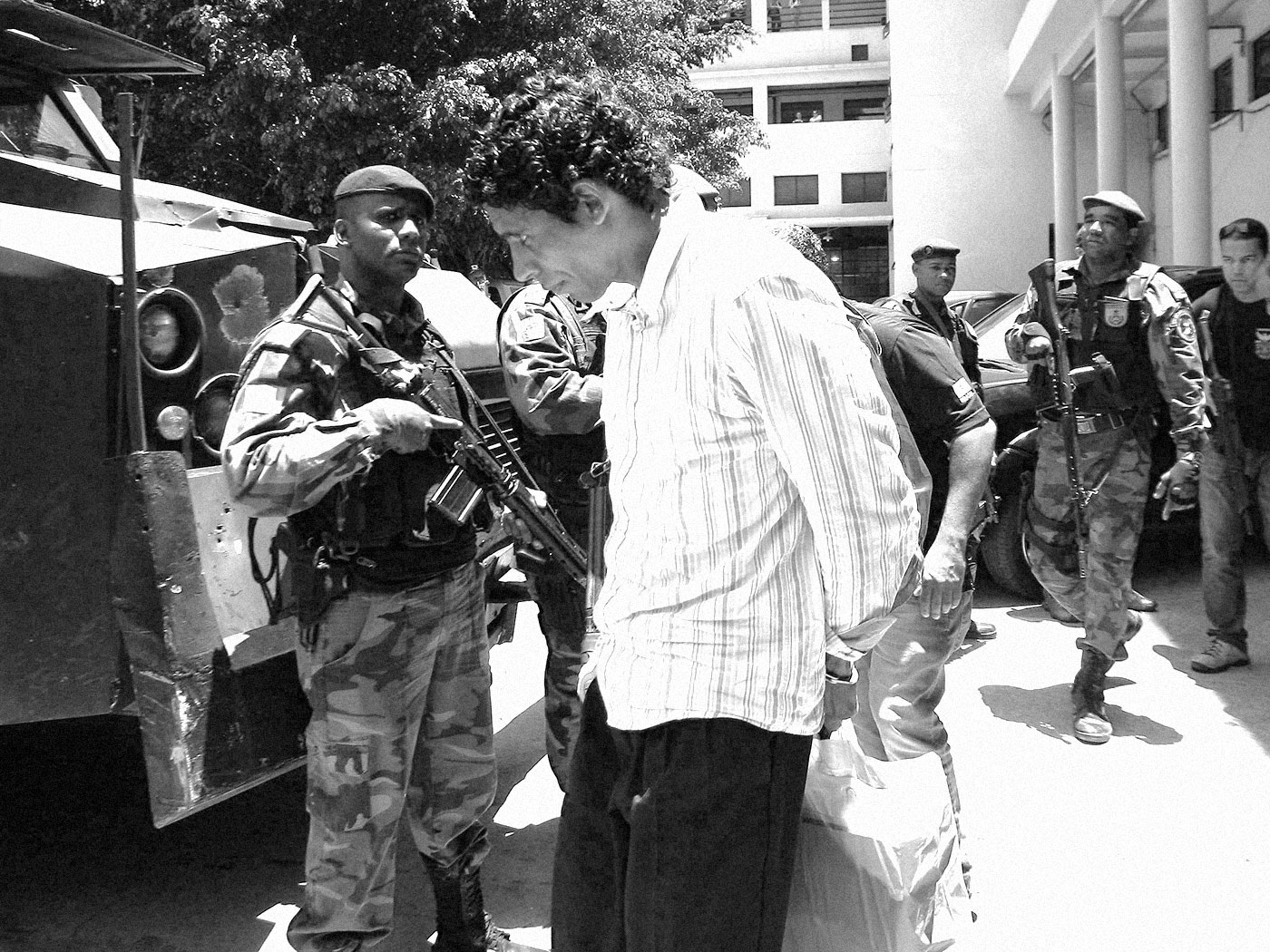
Even in federal prison, Nem wouldn’t hand over the keys to the business entirely, but his right-hand man, Rogério Avelino da Silva, aka Rogério 157, began running things. It would be a fateful decision that the leadership would regret years later. But nobody knew it yet.
Meanwhile, the ADA continued to grow as a large corporation, with branches not only in the South and West Zones, but throughout the state, in Niterói, Macaé, and the cities of the Baixada Fluminense.
The Third
Command
of Friends
MAY 2017
[Acari/Pedreira, NORTH ZONE]
2017 promised to be a very big year— though not in a good way. Drug sales, which rode high during the presidencies of Fernando Henrique Cardoso and Luiz Inácio Lula da Silva, had dropped off as the Brazilian economy waded into a major recession in late 2014. But business still boomed during the 2014 World Cup and the 2016 Olympics, both hosted in Rio, and a sort of pax mafiosa held in the city, as the redistribution of police forces meant that traffickers who paid their bribes and kept their heads down were left alone and shootouts became rarer as a result. These major events, and the cycle of whopping incomes, were over now.
Nem saw that the scenario was evolving and cut a deal with the Terceiro Comando Puro, joining forces with them to form the new Terceiro Comando dos Amigos, or Third Command of Friends. That was just the first step. He sought out an alliance with the Primeiro Comando da Capital, or PCC — the powerful criminal syndicate that runs São Paulo — taking advantage of a rift between them and the Comando Vermelho. The neighboring favelas of Complexo da Pedreira (ADA-controlled) and Acari (TCP-controlled) were the poster children for the new alliance, which they commemorated with a baile funk song.
The new cartel didn’t last more than a few months. Carlos da Silva Fernandes, aka Arafat, ADA chief of Complexo da Pedreira, changed sides as soon as he saw signs of weakness. He ordered his soldiers to declare their allegiance to the Terceiro Comando Puro. Arafat was locked up in the Bangu prison, which divides prisoners by gang affiliation. Fearing retaliation, he requested that he be moved immediately to the TCP block. Between October and December 2017, 840 ADA defectors followed him from Block 4 to Block 6, to be welcomed as new TCP recruits.
With the end of the alliance, the ADA lost control of a favela without even a shot being fired. The TCA had been nothing more than a charade.
Payback from the Militia
July 2017
[Saçu, North Zone]
After the alliance dissolved, the second sign of the ADA’s demise arrived in the winter of 2017. Militiamen in ski masks and black jackets blitzed the Saçu favela and evicted the drug traffickers.
Though it was only a small favela in a quiet suburb, this takeover left the ADA leadership in shock.
September 2017
[Nogueira, West Zone]
In another corner of Rio, the militia continued its plan to strangle the ADA. In September, they took over the Nogueira favela in Realengo, in the West Zone.
A militiaman known as Cigarrão, or Big Cigarette, posted a live video of the invasion on Facebook. “It’s ours now! Nogueira is ours, you sons of bitches!” he tells the camera. One of his colleagues asks, “Are you going to post this?” and he replies, “Nah, I’ll delete it.”
The next day, Cigarrão was executed by his own clique.
You snooze,
you lose
September 2017
[Rocinha, South Zone]
Meanwhile in Rocinha, on the other site of town, a WhatsApp audio message was quickly circulating among residents: “Nem is no longer in charge. Nem isn’t our boss anymore, and he’s no friend of ours because he sent orders to shoot us.” It was Rogério 157 announcing a clean break with the boss, who was sitting in a maximum security lockup 2,100 miles away.
The disagreement flared up in August 2017, and the hillside favela was divided: The lower regions, allied with Nem, disagreed with the high taxes that Rogério charged merchants and his monopoly on gas suppliers, while those further up the hill swore allegiance to the new boss. In the end, the ADA would lose its crown jewel and see it fall into the hands of enemies. Rogério initiated a coup and planted the flag of the Comando Vermelho atop Rocinha.
After so much gunfighting, the government decided that it had to intervene. The army and the police occupied Rocinha. Rogério 157, finally the undisputed big boss, was forced to flee. After scurrying around the city, he ended up being arrested in Favela do Arará, more than 20 kilometers from Rocinha. Nem could not ignore the ADA’s decline, especially after losing Rocinha. He jumped ship to the Terceiro Comando Puro but still didn’t take his eye off the PCC syndicate in São Paulo.
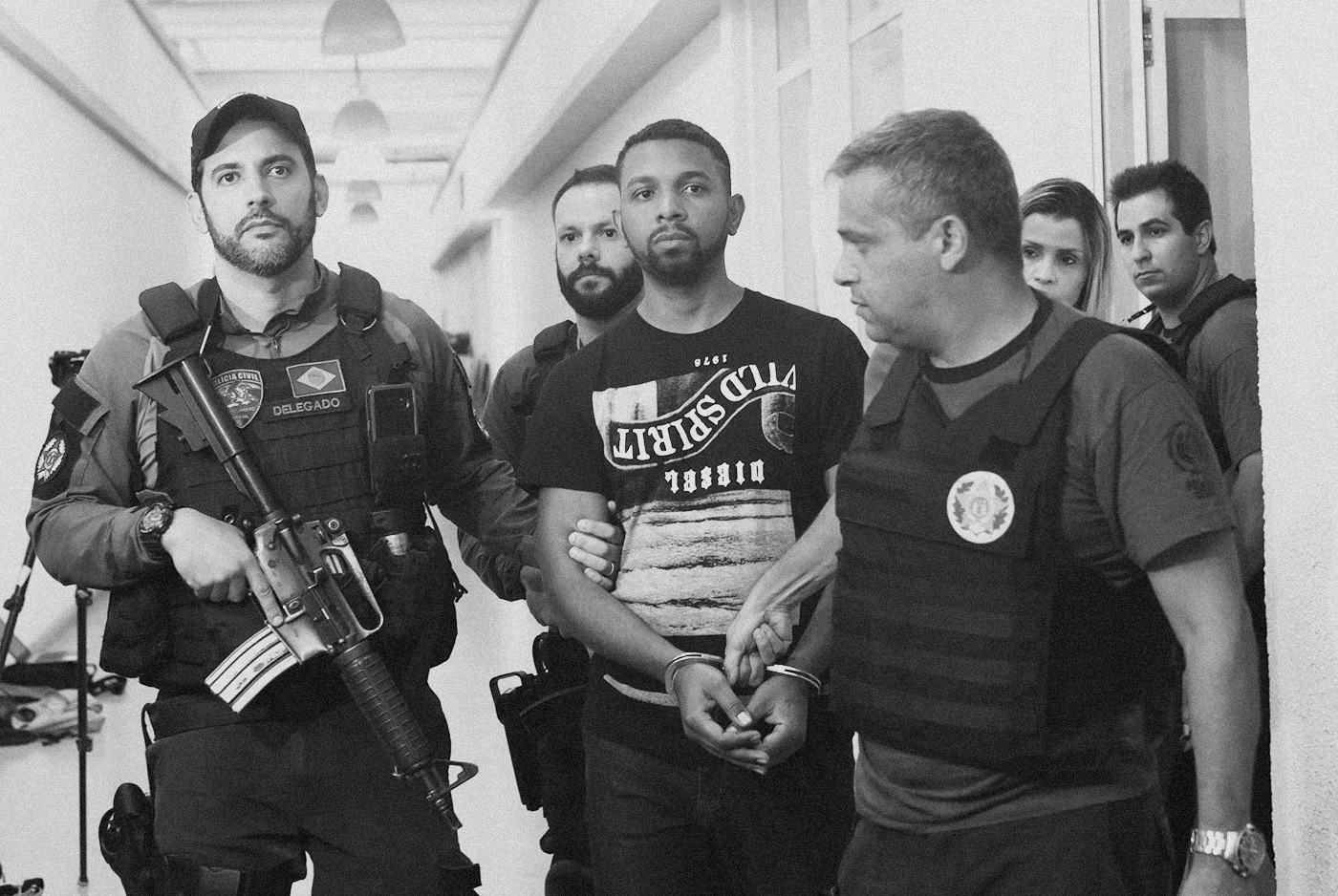
November 2017
[Juramento, North Zone]
While the ADA was still picking up the pieces after its defeat in Rocinha, the Comando Vermelho channeled its efforts into taking over the Morro do Juramento favela, in Vicente de Carvalho, in the North Zone.
More than 100 drug traffickers headed out from the Complexo do Alemão to overrun Juramento, territory that had belonged to the ADA for years.
It was a bloodbath. Juramento endured 50 straight days of street battles. At least 12 people were killed before the Comando Vermelho finally managed to kick out the ADA for good.
November 2017
[São Carlos, Centro]
The São Carlos favela complex, located in the central region of the city, had served as Nem’s top subsidiary. He could count on soldiers from São Carlos whenever something important needed to be done, like taking on Rogério 157. On Nem’s orders, a band of 60 men drove in a convoy through 10 different neighborhoods to confront their rivals in Rocinha.
And when the tides changed, the drug lords of São Carlos heeded the kingpin’s orders and switched from the ADA to the Terceiro Comando Puro.
The TCP faces
its rivals
November 2017
[Macacos, North Zone]
Just like Nem and the São Carlos gang, other leaders began to defect, bringing their weapons and men to other cartels. Among them was Leandro Nunes Botelho, aka Scooby, the boss of Morro dos Macacos in Vila Isabel, North Zone. Scooby had made big headlines in 2009 after shooting down a police helicopter during an operation, killing three officers.
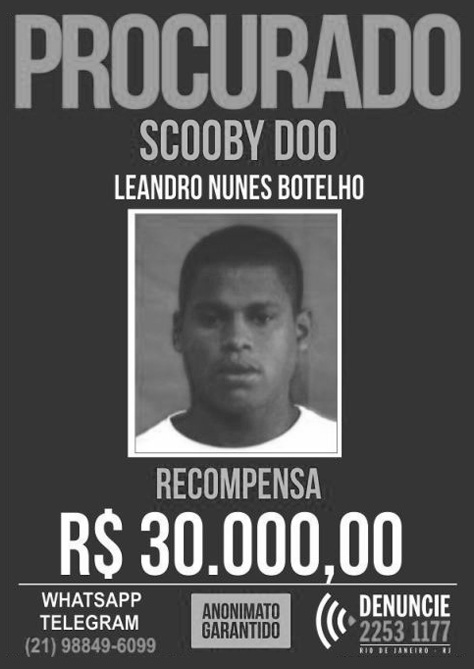
A fugitive ever since, Scooby jumped at the chance to join up with the Terceiro Comando Puro. The ADA was waning.
Still in November 2017
[Caju, Centro]
The month of November was not yet over when four traffickers from the Comando Vermelho wrested another area from Amigos dos Amigos.
This time they set their sights on Caju, in the port area of the city. Starting on a holiday weekend, this bayside district underwent 10 days of sheer terror before being taken by the Comando Vermelho.
A Summer of Losses
January 2018
As New Year’s festivities wound down, the ADA began to count its losses of men, weapons, and territory. In the previous year, Caju, Juramento, and Rocinha had ceded to Comando Vermelho after intense conflicts. Macacos, Pedreira, and São Carlos had defected to the Terceiro Comando Puro, and Saçu, Nogueira, and Carobinha had fallen under militia control.
These leadership changes caused a domino effect in smaller favelas, such as Cruzada in Leblon, near Rocinha, which converted to CV, and Casa Branca in Tijuca, near Macacos, which turned TCP. Both of these functioned largely as ancillaries tacked on to the larger favelas next to them. Carobinha, which the ADA had captured by gunfire in January 2017, was back in the militia’s hands.
In the span of eight months, the ADA’s grip had shrunk from 19 favelas to five.
Disappearing
from the Map
June 2018
[Batan, North Zone / Coroa, Centro]
While spectators around the globe watched their soccer teams duke it out at the World Cup in Russia, disputes were being settled with bullets in Rio. What remained for the ADA was a handful of minor territories, geographically isolated from each other. The cartel’s strongest leader, Celsinho, had been in prison now for nearly two decades, and they had become easy prey for rival factions.
In June, the Terceiro Comando Puro invaded the Morro da Coroa in Centro. Traffickers who accepted the change in command were allowed to stay; those who remained loyal to the ADA were sent packing.
A few days before the occupation of Coroa, the Terceiro Comando Puro invaded Batan, in Realengo. The favela had become notorious in 2008 after journalists on assignment from the O Dia newspaper were kidnapped and tortured by the local militia. This episode was incorporated into the 2010 movie “Elite Squad 2: The Enemy Within” and was the impetus for a parliamentary inquiry into militias in 2008. Prior to the incident, most people thought that militias were a good thing — and some still do.
July 2018
[Urubu, Pilares, North Zone]
The Terceiro Comando Puro train kept steaming ahead. The following month, a fleet of drug lords invaded the Morro do Urubu in Pilares, North Zone. Local bosses were given an ultimatum: Give up the ADA or give up living. They opted for the former.
Only two areas held out under the fraying banner of the ADA: Vila Vintém, located between Padre Miguel and Realengo in the West Zone, far away from Centro and the South Zone, and Morro do Dezoito, in Agua Santa. Vintém remains the headquarters of Celsinho, the only ADA leader left standing.
Vila Vintém
on Alert
October 2018
Although the ADA has lost many battles, it’s not ready to lose the war. The cartel has been working hard to rebuild itself and prepare for a comeback in Rio. Nem remains in contact with the PCC in São Paulo. In October, his 19-year-old daughter, Eduarda dos Santos Lopes, was arrested along with four others for allegedly hatching a plot to invade Rocinha with the PCC’s help.

After the plan flopped, the ADA’s new strategy has been to nibble away at the edges, looking for easy gains across the larger metropolitan area of Rio. In October, ADA traffickers in Niterói, across the bay from Rio, aided by a convoy from Vila Vintém, took over the Nova Grécia favela in the municipality of São Gonçalo, an area that belonged to the Comando Vermelho. One month later, the ADA raided the neighboring favela Novo México and killed a Comando Vermelho member. That conflict is ongoing.
A Preview of Scenes Ahead
December 2018
Within Rio itself, the ADA’s most recent act of bravado was an attack on the militia in the Morro do Jordão, Jacarepaguá, in the West Zone, in early October. It failed to take the territory but managed to scare local residents and prove that it is reorganizing from its last stronghold of note.
Founder and present commander, Celsinho da Vila Vintém, is the one who will decide the future of the Amigos dos Amigos. In the meantime, the courts will decide his future. Celsinho is currently in jail for drug trafficking, cargo theft, and criminal conspiracy. In May 2017, he was transferred to a federal prison in the Complexo de Gericinó in Bangu. He was just a few months away from finishing his sentence when, in September 2017, during the peak of the Rocinha conflicts between Nem and Rogério, he was sentenced to preventive detention, accused of ordering the invasion.
The intelligence division of the state of Rio is closely monitoring a possible defection of Celsinho da Vila Vintém to Comando Vermelho – hardly unthinkable, as it was with CV that he first cut his teeth in the business. If the negotation goes through, it would spell the official end of the ADA, a more than 20-year reign coming to a halting close within the span of just over a year. In the meantime, Vila Vintém wearily holds out, encircled by rival factions on all sides.

